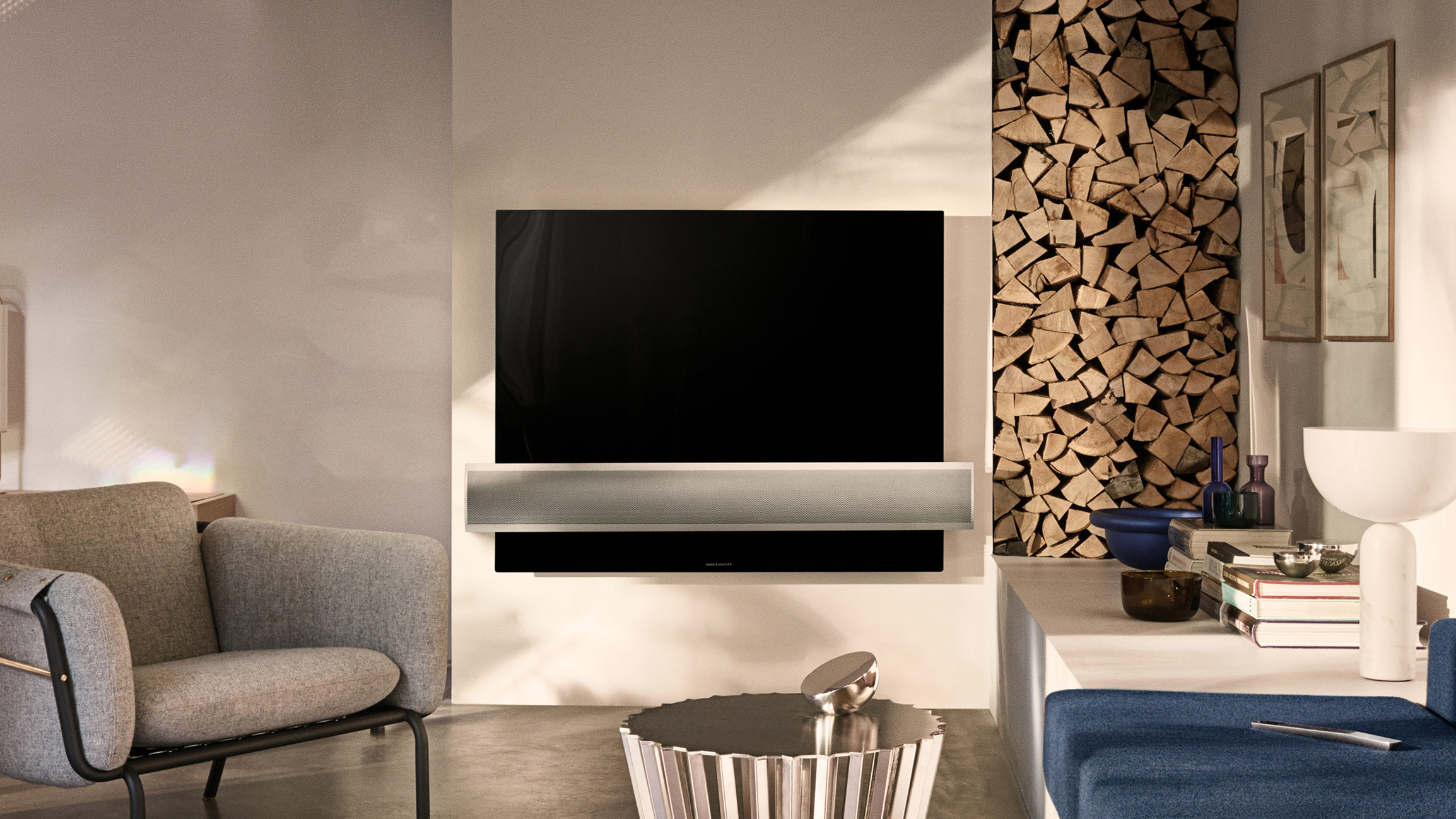TechRadar Verdict
The B&O BeoVision Eclipse is the complete package. It looks great, sounds great, and is beautifully designed ... but it’s only worth buying if you’ve got money to burn. If not, you could get an equivalent LG OLED TV plus a surround sound system for a far cheaper price.
Pros
- +
Excellent image
- +
Beautiful design
- +
Sound quality is amazing
Cons
- -
Very expensive
- -
Unintuitive remote
Why you can trust TechRadar
It can be hard to find a TV with good sound quality. Generally speaking, if you want to experience quality sound, you’ll need to buy a soundbar or surround sound system to augment the often pitiful sound you’ll get from your TV’s built-in speakers.
There are, however, a few exceptions to that rule – a few TVs that throw convention out the window and focus on delivering a powerful sound quality without any compromises.
Like, for example, the Bang and Olufsen BeoVision Eclipse.
Not only does B&O’s latest offer the best in sound with a massive 450-watt speaker, but it packs it all together with an OLED TV screen that oozes inky blacks and displays a dizzying amount of colors.
The only thing stopping this triumph of audiovisual mastery? Its incredibly steep price tag.
Design
There’s really no denying it, the BeoVision Eclipse is a work of art. It’s engineered to be beautiful, and it’ll look right at home in any modern-looking house.
It’s available in both 55-inch and 65-inches, and by default it comes with a wall-mount, but not a floor stand – though one is available to purchase separately. (For the purposes of this review, we’ve been sent a 65-inch model with the floor stand.)
It’s worth pointing out that the floor stand doesn’t just look cool, it serves a purpose, too. Because it’s motorized, you can rotate the TV both around the base, and swivel it to face whichever direction you’re sitting. All this can be controlled straight from the remote, and it functions smoothly and silently, helping highlight the premium look and feel of the TV in general.
You can set different presets for the positioning of the TV too – so, for example, you can have it pushed all the way back and flat against the wall when it’s off, and then set it to automatically extend and face the couch when it’s on.
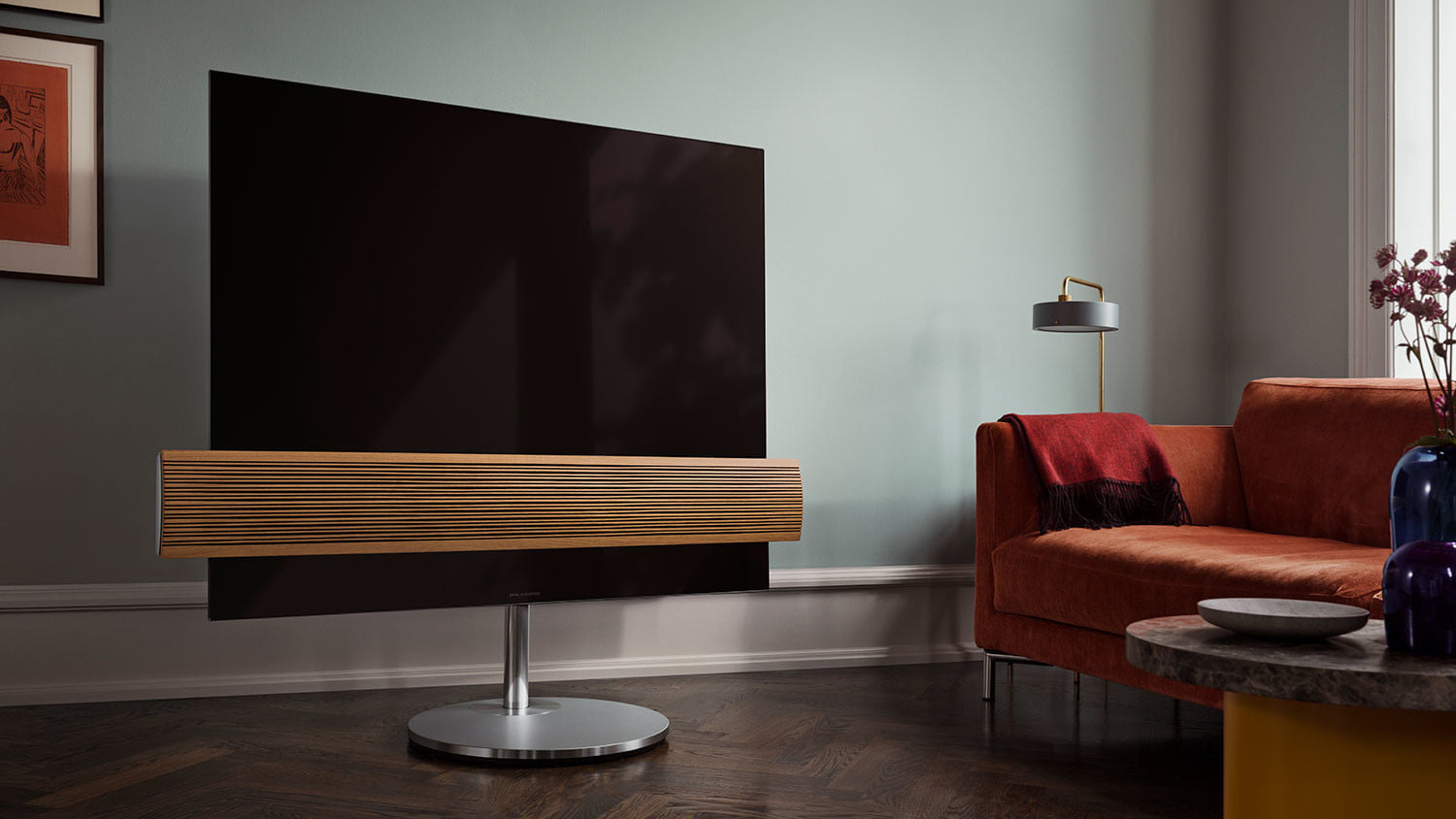
Spin the TV around yourself and you’ll find it’s really thin, too. At its thinnest point near the top, the display is only a quarter of an inch thick – only a little thicker than the now-famous LG OLED W7 TV. That’s perhaps to be expected considering the display itself is built by LG.
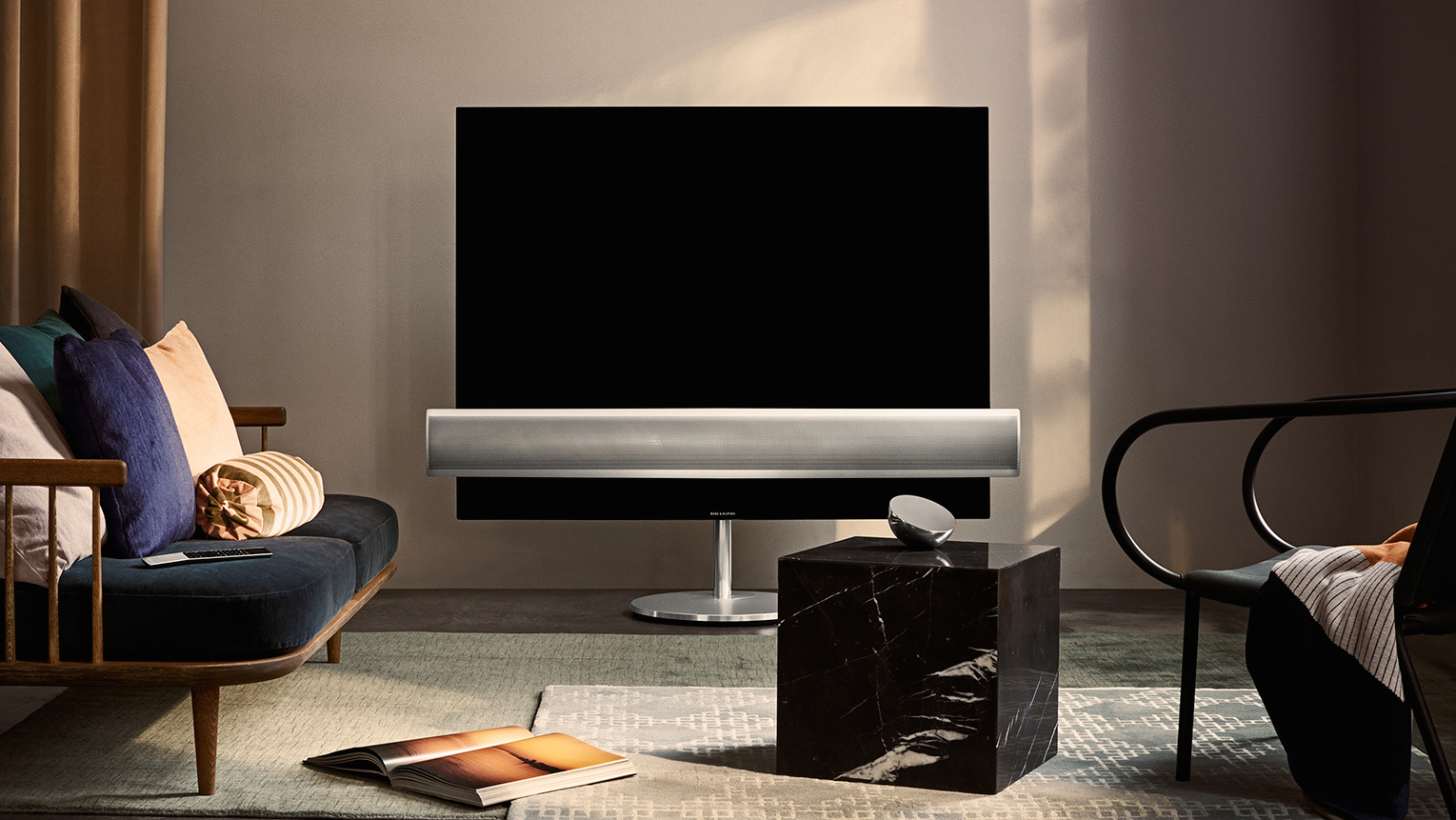
Screen sizes available: 65-inch, 55-inch | 4K: Yes | HDR: Yes | Panel technology: OLED | Smart TV: Yes/webOS 3.5 | Curved: No | Dimensions: 1118(h) x 1611(w) x 122(d) mm | 3D: No | Inputs: Four HDMIs, eight Ethernet, three USBs, RF tuner
If you’re after good build quality, the TV is largely built from a nice, strong aluminum that wraps its way around the back of the TV, the soundbar and the floor stand.
If that combination doesn’t suit your fancy, however, there are other options if you so choose. For example, instead of the aluminum soundbar, you can instead opt for an oak wood cover or even a fabric cover, if that would fit better in your home decor.
On the back of the TV, you won’t immediately see all the connections – that’s because they’re hidden in enclosures, as a way to ensure the design remains sleek and stylish. Under those enclosures, however, you’ll find connectivity galore.
In total, there are four HDMI inputs, eight Ethernet ports, and a few USB ports too. Safe to say, you should have more than enough connectivity options here to cover all your input devices.
If this sounds like it could be a lot of work to setup, don’t worry, setup is a breeze ... because you won’t be setting it up yourself.
The TV is designed – and required – to be set up by professionals (shout out to World Link Installations for their awesome service). While the required installation is a bit unorthodox in practice, there’s a very good chance that if you can afford this TV, you can probably afford the additional fee to hire an installer to set it up for you, too.
Design TL;DR: The BeoVision Eclipse is stunningly beautiful with an industrial design that stands out amongst even the most modern-looking TVs. You also get more than enough connectivity options for the vast majority of use cases and even an installer who’ll come to the house to set your new TV up for you.
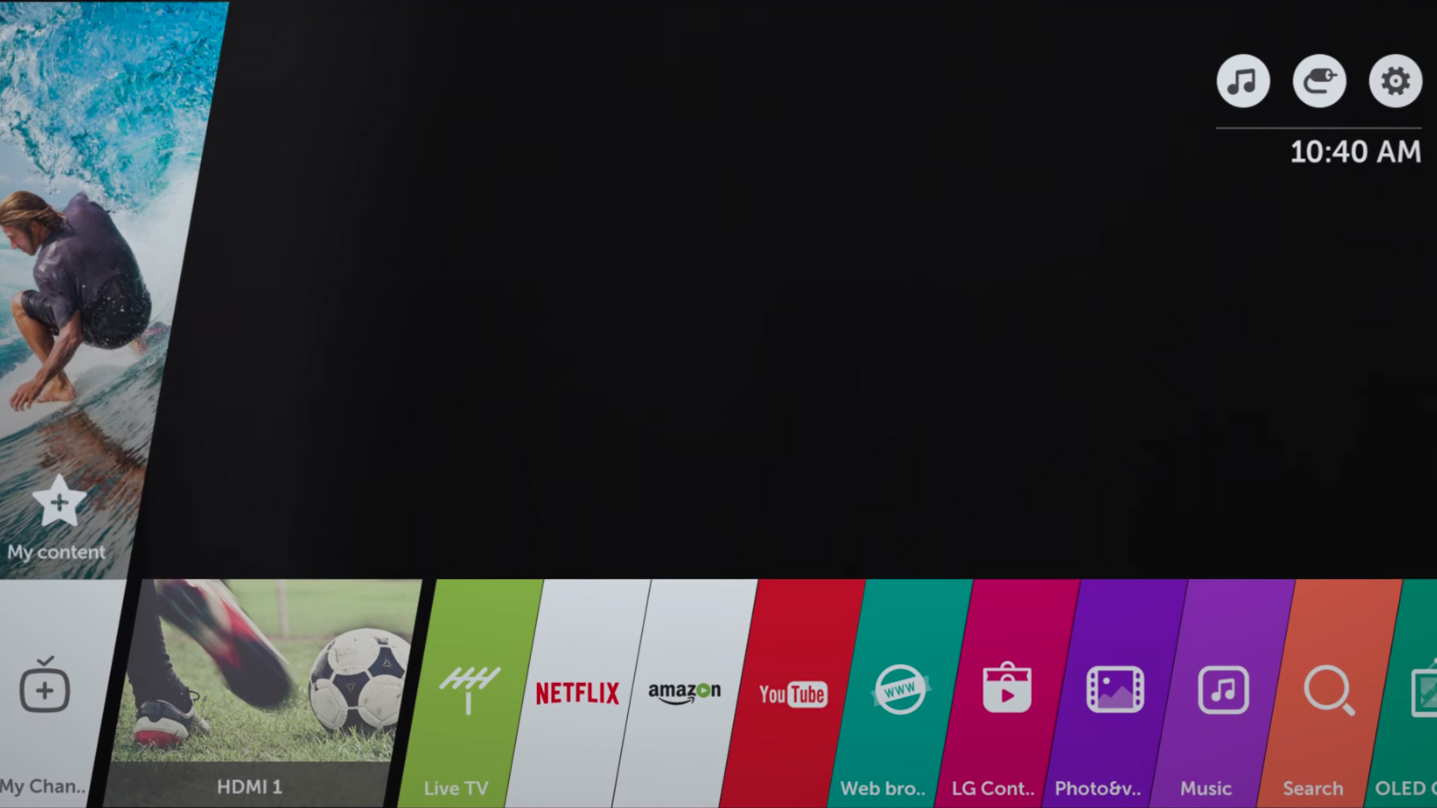
Smart TV (webOS 3.5)
B&O may be responsible for the overall design of the TV, the remote, and the TV’s sound, but it’s LG who’s responsible for the OLED panel used in the TV and for the connected platform that runs on the TV. That means the TV runs LG’s webOS 3.5.
If you haven’t used a recent LG TV before, the webOS interface is generally pretty well-designed and easy to use, allowing you to access most of the services you’ll need in an efficient and quick manner.
It also supports live TV via cable or an OTA antenna, the vast majority of popular streaming apps and services (including music services) and modern features like a built-in web browser, screen sharing, and more.
Now, some argue that webOS 3.5 lacks the je ne sais quoi of other, more popular TV operating systems – and it's true. But it can be hard to put your finger on what, exactly the interface is missing. Our best guess at explaining why you might not enjoy webOS compared to operating systems you've used in the past is that it lacks a full-screen interface, like Android TV on the Nvidia Shield, relegating all apps and services to the bottom third of the screen.
Regardless of its minor shortcomings, LG’s webOS is a pretty full-featured system.
Smart TV TL;DR: The TV runs LG’s WebOS 3.5, which, despite feeling a little lacking, works great for the vast majority of use cases.
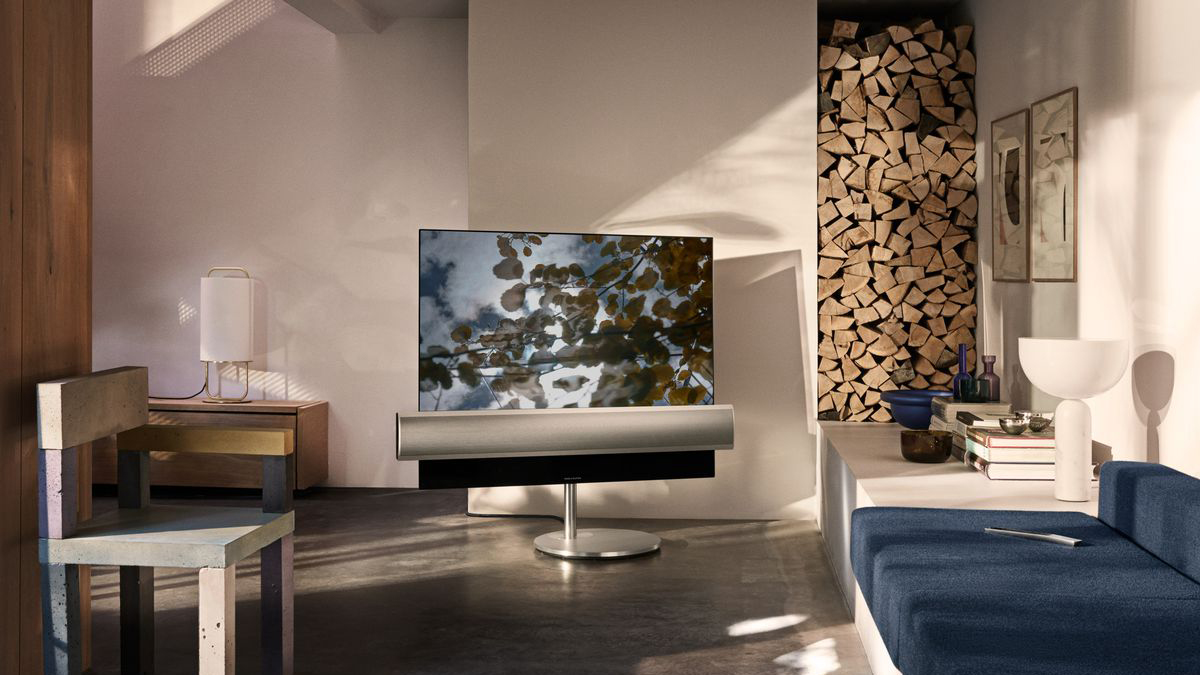
HD/SDR Performance
We still have a long way to go before 4K content is ubiquitous, but until then, rest assured that the B&O BeoVision Eclipse performs admirably even when you’re limited to HD/SDR content.
Part of this has to do with the LG OLED display, which helps the TV perform far better than its cheaper LCD or LED counterparts, delivering nice, deep blacks and clear, vivid colors. Blacks are so deep, in fact, that it can sometimes be hard to distinguish between the aspect ratio “black bars” at the top and bottom of the display compared to the movie itself – and everything blends very well with the black bezel around the display.
Because the panel is built by LG, it also offers LG’s upscaling engine, which we found to be pretty good, though not the best in the business. (That title falls instead to the likes of Sony, with its X1 Extreme processor.)
That said, it’s likely that only ultra technically savvy users will notice a differences and we found that, in the vast majority of uses, the upscaling engine on offer in the BeoVision Eclipse performed quite well.
The panel also features LG’s motion smoothing which, again, is good, but not incredible. There are a few TruMotion motion smoothing modes on offer here – “Smooth,” “Clear,” and “User,” which allows you to set the mount of de-judder and de-blur you want.
Both Smooth and Clear modes suffered from some interpolation artifacts, which you can see in smudges that show around moving objects on the screen. If you’re someone who’s easily taken out of the action with motion smoothing, then it might be worth digging through the settings and just turning it off.
HD/SDR TL;DR: The TV may work best with 4K HDR content, but the upscaling on offer here helps any HD content still look much better than it otherwise might.
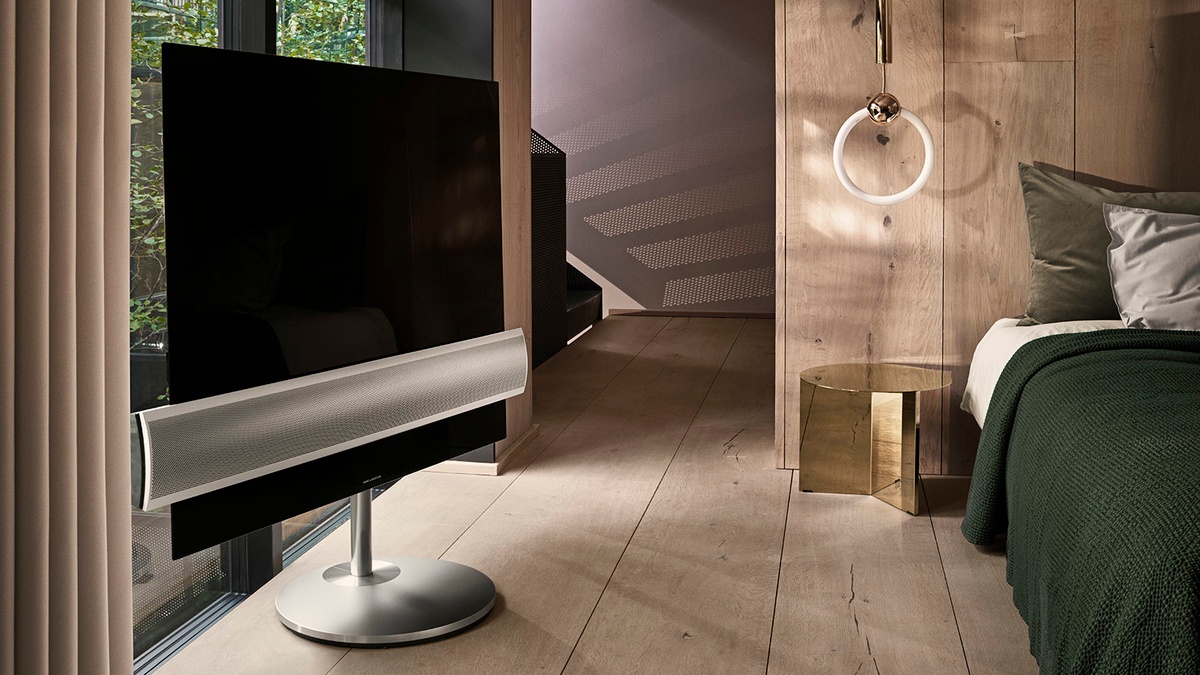
4K/HDR Performance
Of course, to really take advantage of everything this TV has to offer, you’ll want to subscribe to some source of 4K content (like Netflix’s Ultra HD plan).
Should you treat yourself to added visual fidelity, the B&O BeoVision Eclipse will perform extremely well with 4K/HDR sources, offering support for both Dolby Vision and HDR10 HDR formats.
In HDR mode, the fine detail is very impressive ... as long as the screen is set up properly. You’ll want to make sure that the correct aspect ratio is selected (Just Scan is probably the best option for most users), but assuming it is you’ll avoid any patterning, and achieve plenty of fine detail.
There are a ton of picture mode presets to choose from: Vivid, Standard, APS, Cinema, Sports, Game, HDR Effect, Expert (Bright Room) and Expert (Dark Room).
If you’re in a room with moderate ambient light and simply want to choose the best all-around option, then we recommend simply sticking with Standard mode. It’ll offer the most realistic tone for most users. That said, there’s nothing wrong with experimenting a little – so if you’re up for it simply go through the presets and find the one you like best.
A key component of the Eclipse’s 4K/HDR success is Dolby Vision, basically a top-tier HDR specification that offers a nice, bright, colorful specification for a range of content – including most of Netflix’s self-produced content.
Using this TV to watch Dolby Vision (or HDR content in general, for that matter) will be like a light bulb going off. This is what TV should look like.
4K/HDR Performance TL;DR: Vivid colors, excellent black levels, and pretty good motion handling are all commonplace with the B&O BeoVision Eclipse.
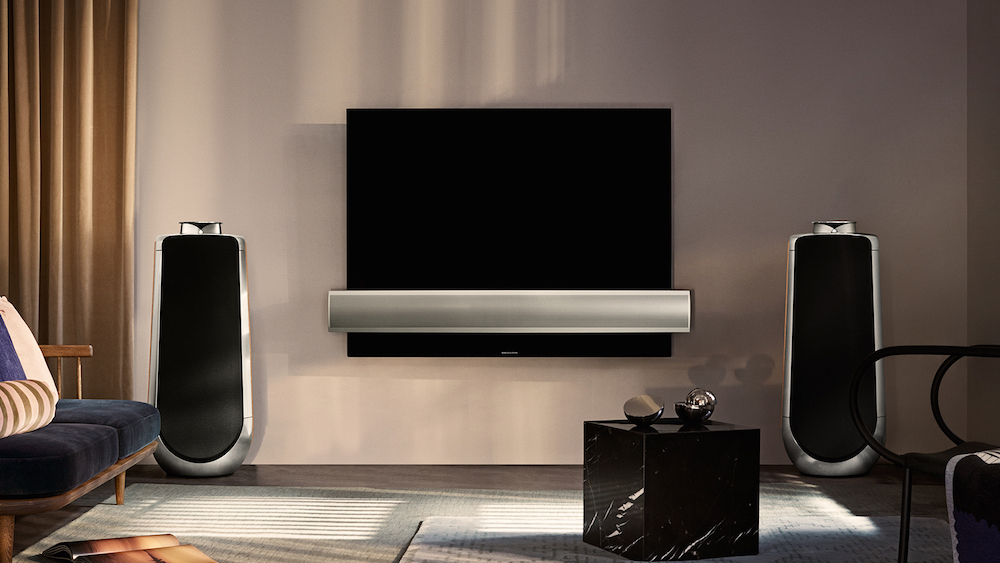
Sound
The B&O BeoVision Eclipse doesn’t just offer a great picture, it also offers an exceptional sound performance as well.
Of course, considering its heritage, you would expect nothing less from Bang & Olufsen. The company has a long history in developing ultra high-quality audio products, from speakers to headphones, and it has really held nothing back for the BeoVision Eclipse. The speaker itself comes in at 450-watts, and it can get seriously loud if you want it to.
Now, if you’re spending this much on a TV in the first place, chances are that you can afford a pretty impressive sound system, too. Should you decide to connect one, however, you can use the soundbar with it as a center channel – so it’s not totally useless if you choose to install a more comprehensive surround sound system.
If you want, you can install up to eight additional loudspeakers to the system, but most people probably won’t need to do that.
As it is, the B&O BeoVision Eclipse offers plenty of volume to handily replace any three-channel surround sound system, but the fact that you can use it with external speakers too only makes it better.
If you’re looking for excellent audio quality, with basic EQ and compression at the disposal of those that like to tinker, then this is an excellent choice of TV.
Sound quality TL;DR: As far as built-in sound goes, the B&O BeoVision Eclipse offers among the best. Bass is booming here, but it doesn’t leave highs behind – and you’ll find plenty of clarity and detail to go around.
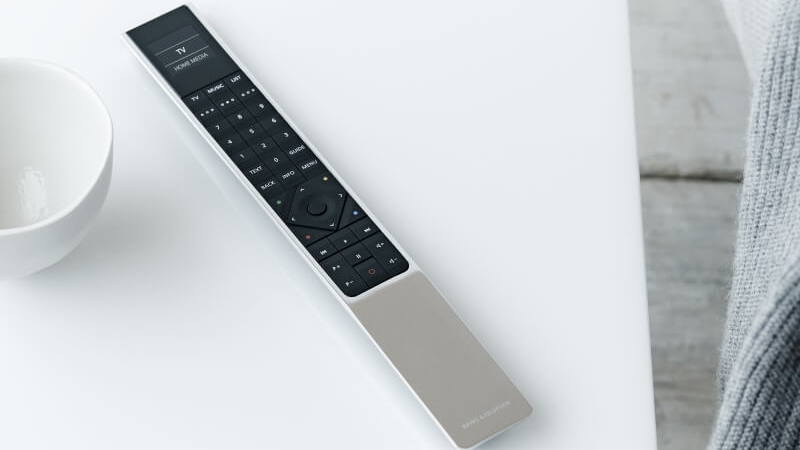
Remote
We usually don’t go into detail on the remote, but considering how unique the BeoVision Eclipse’s pointer is, it’s worth taking a look at.
To that end, the remote that comes with the BeoVision Eclipse won’t just control your TV, it’s also able to control many of your other devices similar in some ways to Logitech Harmony, if a little less universally integrated.
Like Logitech’s remote, there are quite a few buttons to get used to – along with a display at the top – but we found that for most day-to-day use you’ll use the same three or four buttons.
At the top, you’ve got quick keys to access Netflix and Amazon, which is very nice for those that use those services, but a little unnecessary for those that don’t.
The remote’s non-standard approach can be pretty confusing at times. Even turning the TV on is different from what you might expect. Instead of there being a simple on button, you’ll tell the TV to enter a mode using the remote’s built-in display.
So, you might want to “Play PS4,” which we set to turn the TV on, set the input to the HDMI port that was connected to the PS4, and even turn the PS4 on. Using an adapter, we were even able to setup the remote to control the PS4 itself – though, that probably won’t help you while you’re actually gaming.
While we found that the remote worked quite well, it wasn’t quite perfect all the way through. It’s biggest issue is that, because it only controls through infrared, we weren’t able to control the Nvidia Shield TV, which is controlled instead through Bluetooth. If you’re looking for a truly universal remote, you might want to consider the Logitech Harmony range or something similar.
Verdict
The B&O BeoVision Eclipse is really the full package. It’s smart, picture looks awesome, and the sound-quality is stunning. But then there’s the price.
The base model of the B&O BeoVision Eclipse comes at $9,995 (£7,495, AU$13,990) and that’s for the 55-inch model and doesn’t include the floor mount. If you go for the larger, 65-inch model, and want the floor mount, you’re looking at $15,595 (£10,795, $19,990), which is a ton of cash.
So should you buy it? Well, if you’re absolutely loaded, and want a TV that looks and sounds great, plus it fits in your ultra-modern home setup, then it’s not a bad option. If you’re willing to put a little more time into your setup, however, you may be better served simply buying an LG OLED TV and a dedicated surround sound system – for what could be more than $10,000/£5,000 less.
- Want 4K without dropping $15,000? Here are the best 4K TVs in 2018
Christian is a writer who's covered technology for many years, for sites including Tom's Guide, Android Central, iMore, CNN, Business Insider and BGR, as well as TechRadar.
